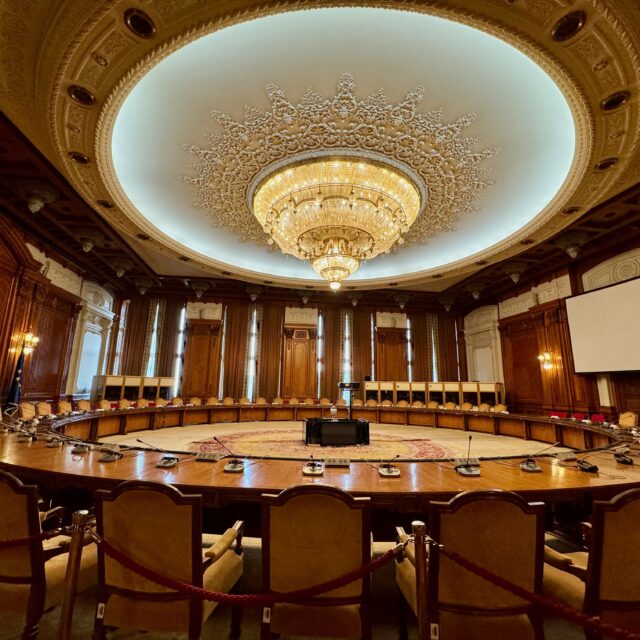Palace of Parliament
Bucharest, Romania
The Palace of Parliament was originally the brainchild of former Romanian dictator, Nicolae Ceausescu. It is a gargantuan structure, officially the second largest and heaviest building in the world after the US Senate. (As accredited by the Guinness Book of Records). It covers an area of 365,000 square metres.
The Palace was designed by a young architect called Anca Petruscu, the winner of a competition to come up with the best design. It was her first major project after graduation and to complete the project she headed up a team of 700 architects. Over one million Romanians worked on its construction which began in 1983 and is still ongoing.
The palace is fascinating to visit although only a very small percentage is actually open to the public.
The interior decor is spectacular with some of the best Romanian materials , including marble and silk used throughout. No expense has been spared. There is an impressive attention to detail. But what makes it even more interesting is the way that the tour only pays a cursory nod to the enormous impact this project had on the lives of ordinary Romanians. Thousands of people were forcibly relocated to make room for it, buildings were razed to the ground and huge quantities of materials were commandeered.
But the people eventually triumphed and the Palace now houses the Romanian government and is also used by the people for all sorts of events.
Accessibility
Entry is only by guided tours which must be pre-booked. Disabled visitors need to book at least three days in advance. They will then be supplied with a dedicated guide who will escort them to the main part of the tour through a separate accessible route. In doing so, this ensures that the whole tour is fully accessible.






